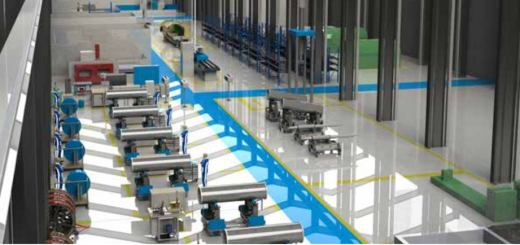Off the factory floor (by Oliver Bird – Lanner Group)

Without a doubt, the most successful businesses are those that are one step ahead. Rather than attempting to close the stable door after the horse has bolted, a proactive business has the ability to prepare for and tackle business hurdles before they appear over the horizon. The challenge facing many companies in the 24/7 internet age is how to take a reactive company culture, i.e. an organisation that responds to particular problems and challenges only once they appear, and turn it into a future-performance-led business. So, what you’re trying to enable is an organisation that has the foresight to predict any challenges, instil greater insight throughout the business, thus optimising the decision-making process to cultivate a more proactive approach to problem solving and process improvement, from the board-level down.
One way to achieve this culture shift is through the use of simulation. Where traditionally simulation has been used to support design, build, operation, and even maintenance of processes and facilities, this is now changing. Savvy businesses are waking up to simulation as a crucial means of making the best forward decisions, harnessing a more proactive culture, and, ultimately, gaining much needed competitive advantage in the process.
Board members of simulation-enabled organizations are beginning to recognise just how useful a tool it can be, and that strategic, not just tactical modelling can provide the key to optimizing business growth opportunities, by helping to construct a valid, tested, dynamic business plan. Moreover, a simulation-led business plan will pre-empt challenges (both internal and external), detailing which processes and resources might require intervention in order to unlock the maximal business performance, vital if a business is to realize its potential.
What results from strategic simulation-led decision making is not only a sophisticated picture of the here-and-now, but also a future-proofed strategic asset in the form of a flexible, re-usable model which can be reviewed, refined and re-evaluated at any time for any future timeline.
Simulation will always have a place on the factory floor, but its move to the boardroom is the real way forward for businesses that are serious about maximizing opportunities for future success. Such companies could have a set of standardized, consistent model assets in place, which can be deployed throughout the organization and accessed by any relevant employee, from the shop floor to the board room, at any time. Only by adopting a future-state modelling culture for decision making throughout the organization can the true value of simulation solutions be realized, thus extending the reach of simulation beyond the factory floor, significantly increasing its ROI and optimising decision-making throughout the business.
Související články
Čvc 11, 2024
Aplikace pro WMS? Vysoká efektivita, rychlé aktualizace, maximální variabilnost
Aplikace pro WMS? Vysoká efektivita, rychlé aktualizace, maximální variabilnost
Čvn 7, 2024
Setkání uživatelů nástroje PREWIT
Setkání uživatelů nástroje PREWIT
Čvn 7, 2024